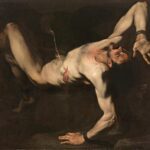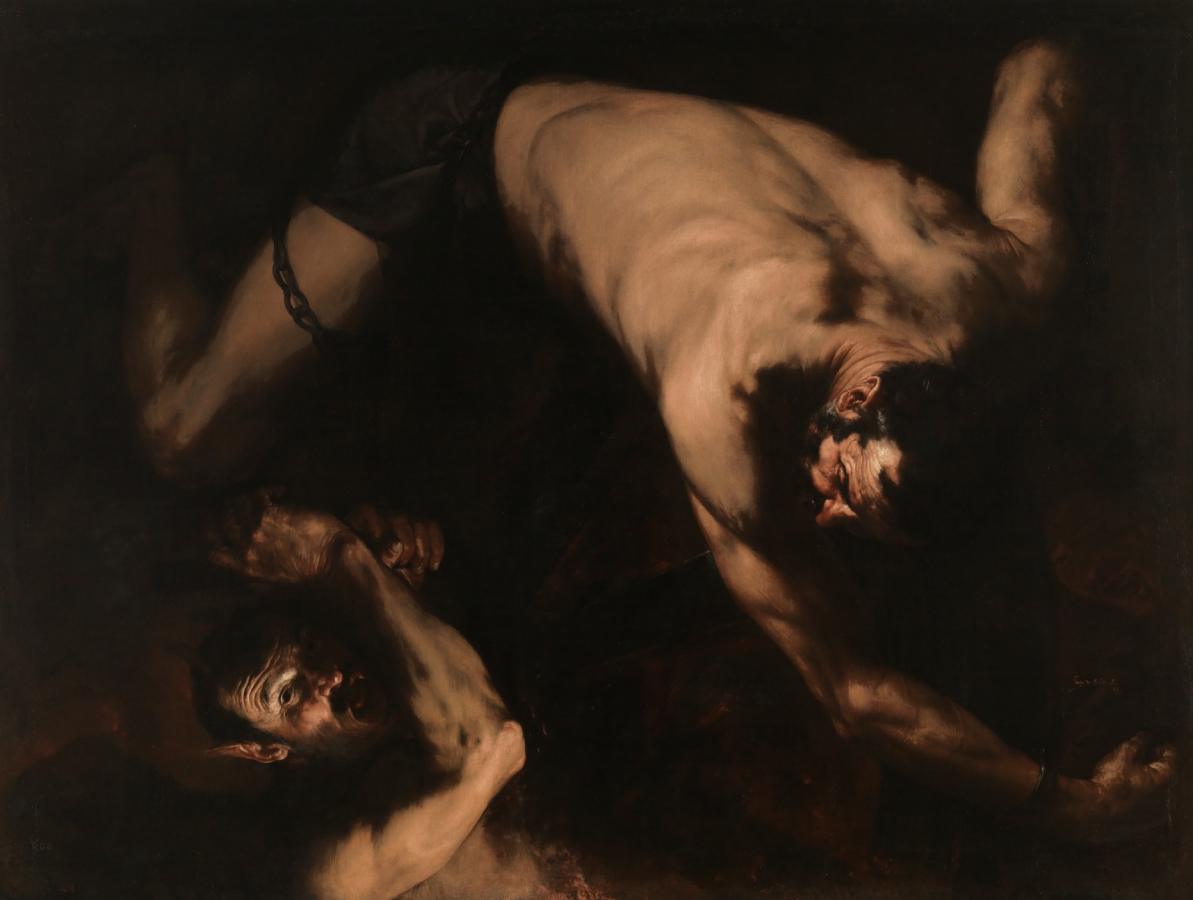Ribera, Jusepe de (1591-1652)
Issione (Ixion)
1632
Oil on canvas, 220 × 301 cm
Museo del Prado, Madrid
The father of the race of centaurs, Ixion was punished by madness for murdering his father-in-law. After he was pardoned he attempted to supplant Jupiter in Juno’s bed and was consequently condemned to be turned on a wheel for all eternity. Ribera depicts the wheel being set in motion by a satyr who has chained Ixion to it, allowing the artist to display his mastery of anatomy. The canvas is a pair to Tityus (P1113).
The virtues of Ribera’s Furias are even more apparent in Ixion, the most personal of his interpretations of the sinners in Hades. Unlike Tityus, there were few precedents for Ixion. He is the only one of Titian’s Furias of whom we no longer have any visual record, and he was not popular with earlier painters, either in Italy or in the Netherlands. Ribera’s Ixion is thus something of a seminal piece, and displays his remarkable ability both to depict the human body in extreme conditions and to convey to the viewer the horror inherent in the scene. Even more than in Tityus, he placed the action in the immediate foreground. The giant’s huge body, animated by the circular motion of his torture, stands out against a black background, and seems to plunge towards the viewer, who is also oppressed by the torturer’s cruel stare. In Ixion, it is the torturer rather than the sinner who conveys the cruelty of the punishment. The torturer glaring out at the viewer deserves some comment. He is an invention of the painter for three female figures -Alecto, Megaera and Tisiphone, the true Furies- were responsible for enforcing the torture of sinners in the underworld. Ribera, however, opted for a male figure whose most distinctive physical features are his little horns and pointed ears. There is no reference in classical or Renaissance sources to this figure but, as Vincenzo Abbate has noted, he is mentioned by Marino in 1623 in his L’Adone. Canto XIII, entitled La prigione, focuses on the ordeals suffered by Adonis, chained in Hades by order of Vulcan, the simbolo di Satana. Amongst the figures torturing Adonis there, Marino mentions one con l’orecchie asinili, che non gode della dolcezza dell’armonia, anzi l’aborre, ci rappresenta l’avarizia e l’ignoranza, che non si curano di poesie né si compiacciono di musiche. The resemblance of Marino’s torturer, the personification of greed and ignorance, to the version painted by Ribera is conclusive, and suggests that Ribera was aware of the poet’s celebrated work (Falomir, M.: Las Furias. Alegoría política y desafío artístico, Museo Nacional del Prado, 2014, pp. 182-183).
Pair:
 Ribera, Jusepe de (1591-1652)
Ribera, Jusepe de (1591-1652)
Tizio
1632
Museo del Prado, Madrid
